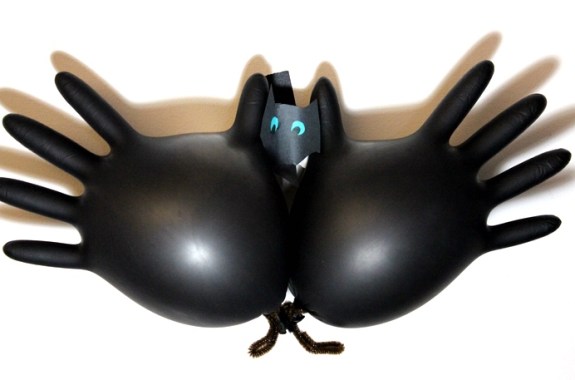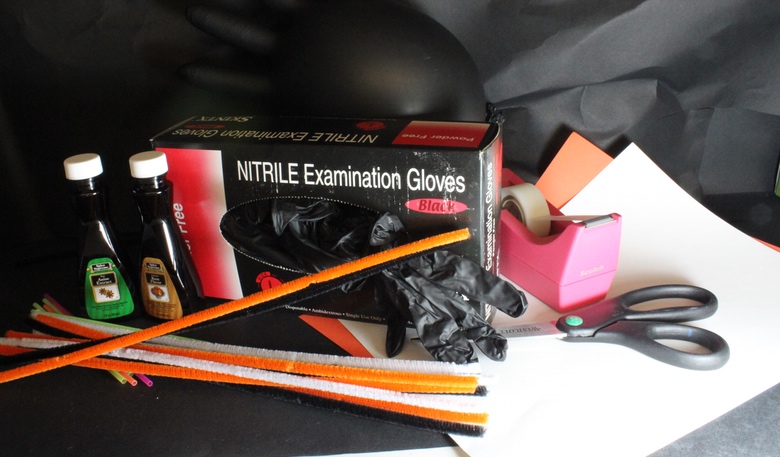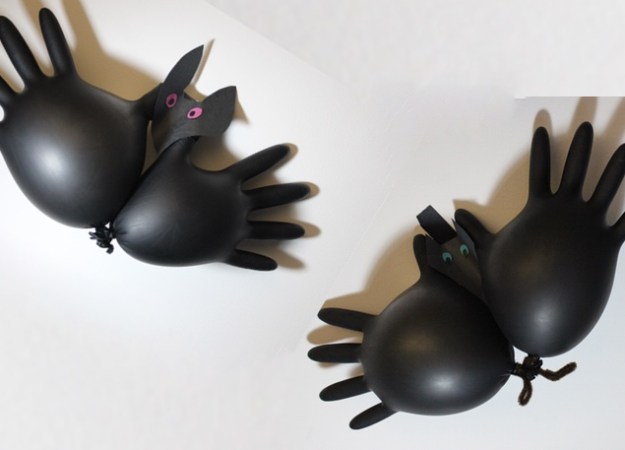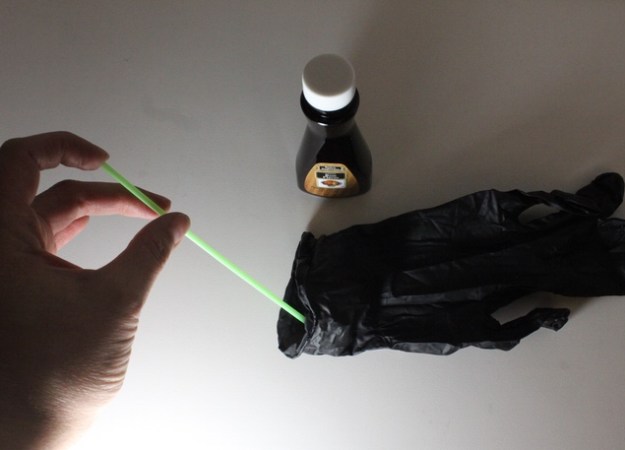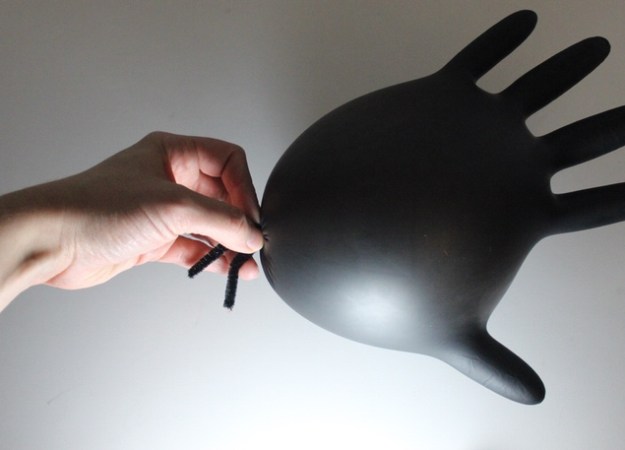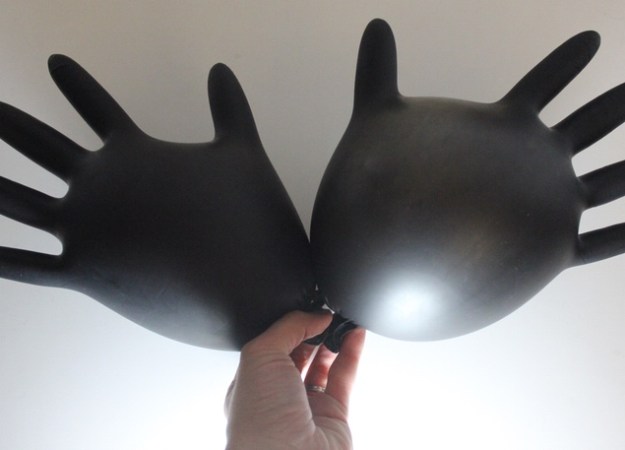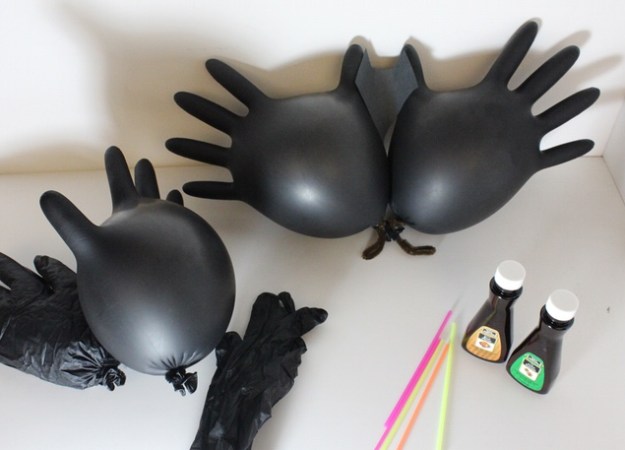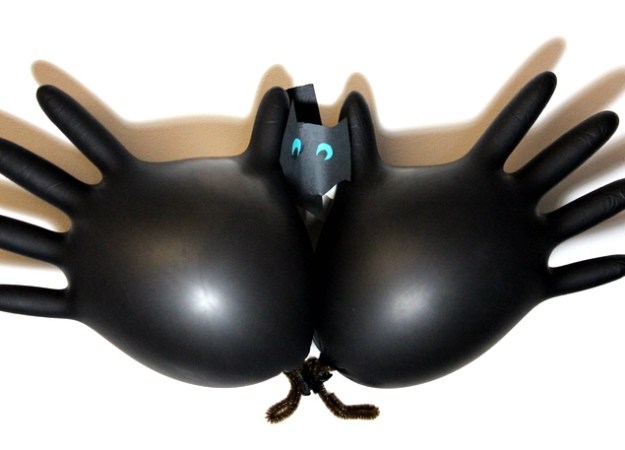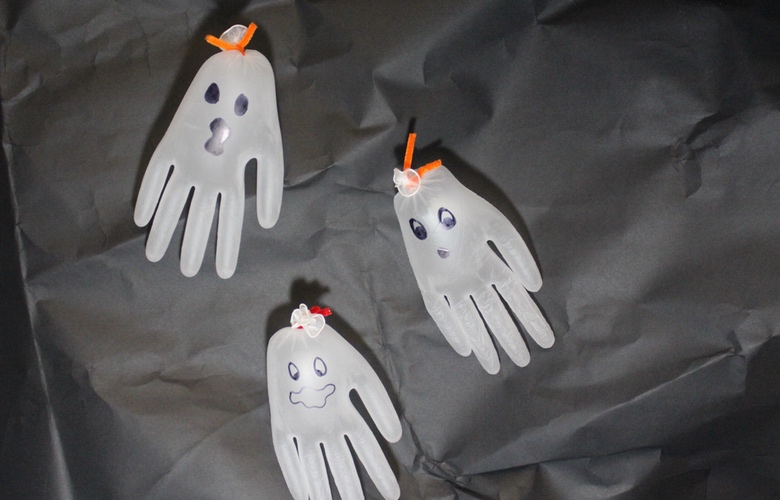Grade Level
3 - 5
minutes
15 min - 1 hr
subject
Chemistry
Activity Type:
diffusion activity, group game, Halloween
Here’s a fun game for Halloween that demonstrates diffusion and the properties of stretchy polymers.
Target Grades: 3-5
Subjects: Chemistry, Physical Science
Duration: 30 minutes for setup and activity
Game objective: Partygoers will try to guess the mystery smells coming from within a series of inflated Halloween bats.
Learning objective: Partygoers will explain and demonstrate how the stretchy molecules of the inflated bats have enough space between them to allow smaller, more concentrated molecules, to pass between them.
Materials
- Black nitrile gloves (latex-free), opaque black balloons also work. Only have normal latex gloves or balloons? Use clear extracts and make smelly ghosts instead.
- Twist ties or pipe cleaners
- Several food extracts—try orange, mint, vanilla, almond, licorice, or coffee
- Droppers, small straws, or pipettes for transferring small amounts of extract into each balloon or glove with a cup of water for rinsing them.
- Optional: black socks, googly eyes, paper, or other decorations to make your bats more bat-like
- Optional: scissors, glue, tape to help decorate your bats and tape or string to hang them up
- Game extension: bungee cords or strips of stretchy fabric, one or more soccer balls
Guessing Game
Invite partygoers to walk up and smell the bats and share what each smells like. This can happen all at once, or gradually over the course of a class period or Halloween party. Ask them to choose their favorites and try to figure out why it smells so good. When everyone has taken a guess, reveal the sources of the smells one at a time, and as a group, decide which bat smells like which extract. Then, ask partygoers this question: How did the extract on the inside of each bat get to the outside if the gloves are still inflated?
How Does the Extract Escape to the Outside?
Though you can’t see them, there are tiny holes all around the surface of a balloon or inflated exam glove. Exam gloves and balloons are both made from flexible, stretchy substances called elastomers. The word elastomer is actually a combination of the word “elastic,” which means stretchy, and “polymer,” which means “many parts.” Elastomers are made of many copies of the same kind of molecule very loosely and flexibly connected to one another. When an elastomer is stretched out—like when a balloon is inflated—the connections between its molecules are stretched out, too, leaving bigger and bigger spaces between them. As a result, other molecules that are small enough (such as volatile vanilla extract) can escape from between them!
Act Like an Elastomer!
Have partygoers stand in a circle and hold a bungee cord between each participant. Tell everyone in the circle that together they represent the molecules of an elastomer (rubber) balloon. Place a soccer ball or basketball in the center of the circle, and pretend that it is a molecule of flavor extract. Allow participants to kick the ball gently between them without letting go of their bungees. While everyone still holds hands, “deflate” the balloon by having everyone in the circle move as close together as possible towards the center. Can the “extract molecule” escape easily when all of the “elastomer molecules” are close together? Next “inflate” the balloon until everyone in the circle is as far apart as possible while still holding hands. What happened to the spaces between each of the molecules? How much more easily would an extract molecule get out now? For some fun-filled chaos, try this activity with multiple balls of different sizes in the center! How does the number of extract molecules (balls) inside affect how many escape (are accidentally kicked) out of the circle?
Why Don’t the Extract Molecules Just Stay Inside?
The moment that a drop of liquid extract goes into an open space, it begins to evaporate into the air, which means that it becomes a gas. Liquid extract molecules can also evaporate inside of an inflated glove or balloon. When that happens, the concentration of extract molecules inside of the balloon increases. That means that the air inside the glove or balloon is literally getting crowded with extract molecules, which bump and push against one another and against air molecules. The result of all this jostling is diffusion from the crowded area inside to the spacious area outside. Diffusion is the spreading out of atoms or molecules from a high concentration to a low concentration, and can happen in any gas or liquid.
Meet the Writer
About Ariel Zych
@arieloquentAriel Zych was Science Friday’s director of audience. She is a former teacher and scientist who spends her free time making food, watching arthropods, and being outside.
